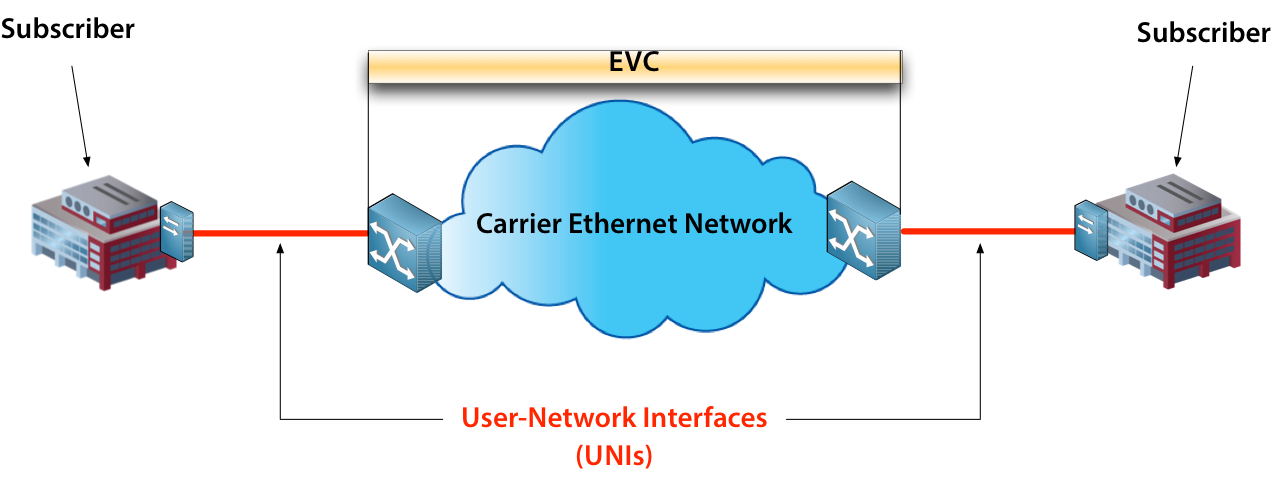EVC
A fundamental aspect of Ethernet Services is the Ethernet Virtual Connection or EVC. An EVC is an association of two or more UNIs. These UNIs are said to be in the EVC. A given UNI can support more than one EVC via the Service Multiplexing attribute (discussed in section 5).
There are three types of EVCs:
- Point-to-point EVCs (see diagram at right)
- Multipoint EVCs
- Rooted Multipoint EVCs
An ingress Service Frame that is mapped to an EVC can be delivered to one or more of the UNIs in the EVC other than the ingress UNI. It MUST NOT be delivered back to the ingress UNI (note that this limitation is only for service frames and does not affect fault management frames like Loopback) It MUST NOT be delivered to a UNI not in the EVC. An EVC is always bi-directional in the sense that ingress Service Frames can originate at any UNI in an EVC.
OVC
When an EVC spans multiple CENs, it is composed on segments in each CEN that are concatenated together to form the EVC. These segments are called Operator Virtual Connections or OVCs. An OVC is the association of UNIs and ENNIs within a single CEN where at least one of these external interfaces is an ENNI. OVCs can be point-to-point or multipoint.
At right is a diagram of an EVC comprises 3 OVCs. OVC1 runs from the first UNI to the ENNI. OVC2 runs from ENNI to ENNI. OVC3 runs from ENNI to the second UNI. Each OVC is managed by the CEN Operator and the EVC is managed by the Service Provider.

